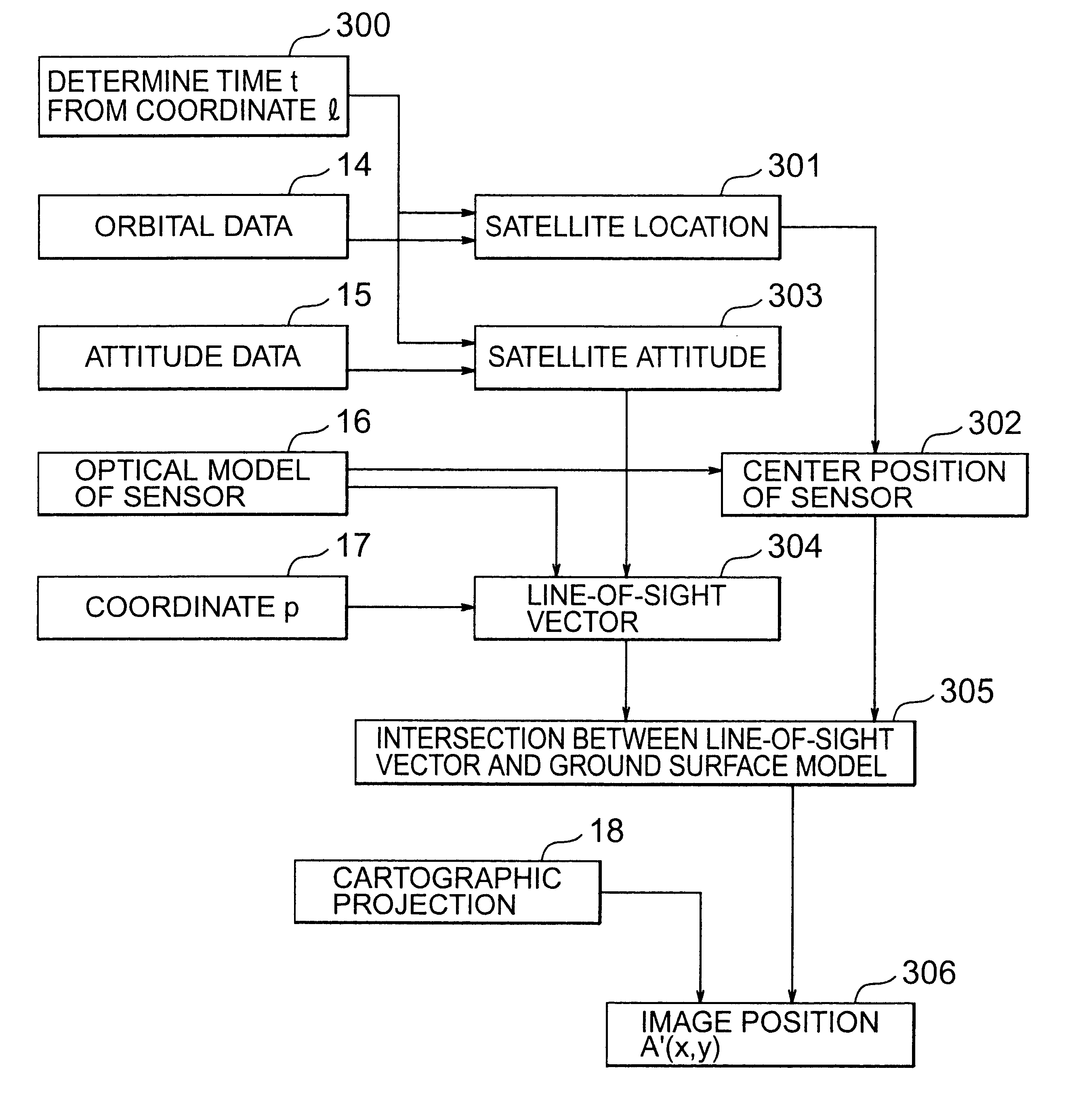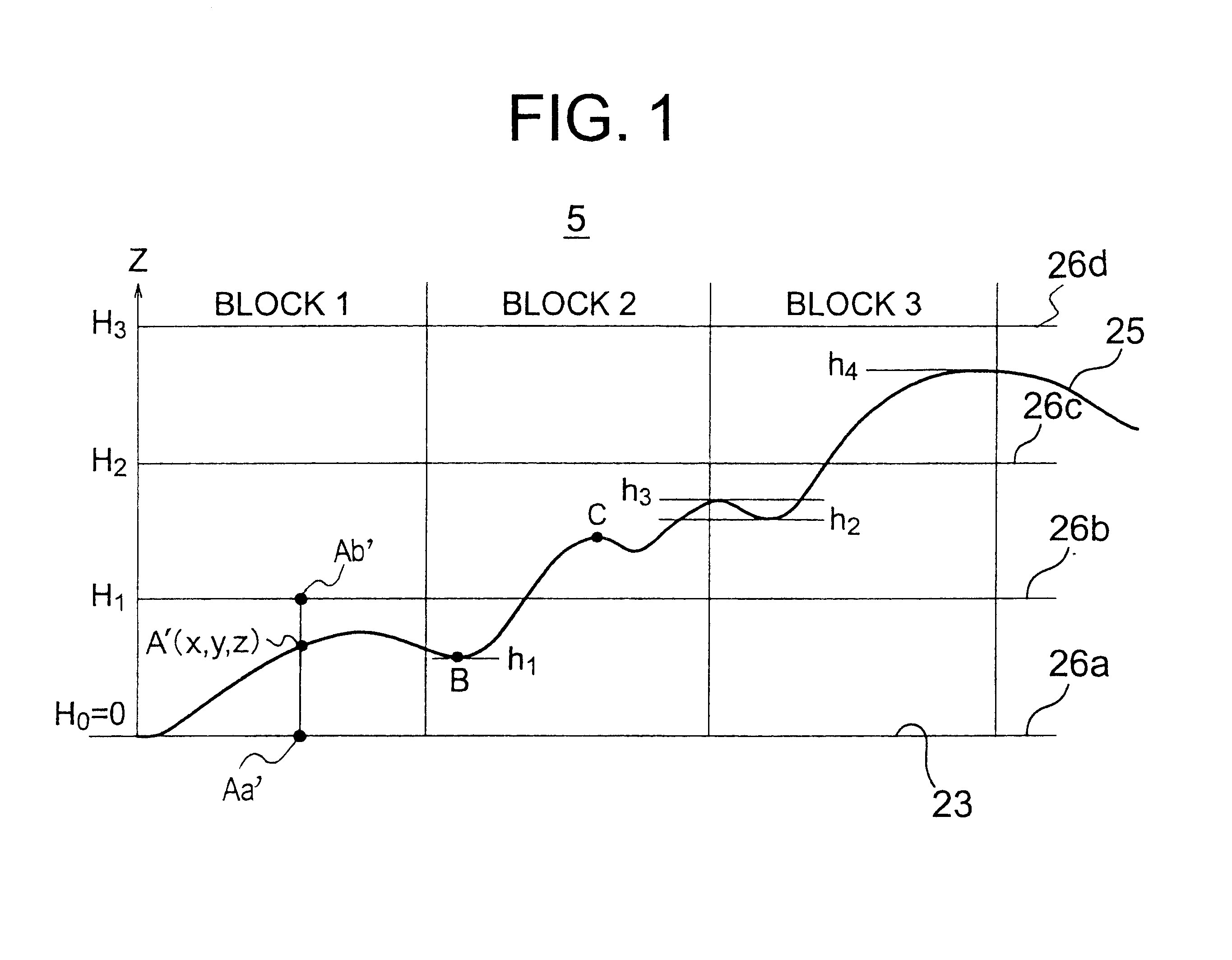Method for orthocorrecting satellite-acquired image
a satellite acquisition and image technology, applied in image enhancement, maps/plans/charts, instruments, etc., can solve the problems of complex calculation, and inability to apply the first correction method,
- Summary
- Abstract
- Description
- Claims
- Application Information
AI Technical Summary
Benefits of technology
Problems solved by technology
Method used
Image
Examples
Embodiment Construction
The embodiment of the present invention will hereinafter be described with reference to the drawings.
In FIG. 1, signs 26a,26b,26c,26d indicate control planes, respectively.
In FIG. 1, a ground surface 25 is shown in cross-section, and the plural different control planes 26a,26b,26c,26d are set on a corrected image 5. The control plane 26a is set as a control plane of a zero elevation (H.sub.0 =0) of a reference rotating ellipsoidal ground surface model 23, the control plane 26b as a control plane of elevation H.sub.1, the control plane 26c as a control plane of elevation H.sub.2, and the control plane 26d as a control plane of elevation H.sub.3. These elevations H.sub.0,H.sub.1,H.sub.2,H.sub.3 satisfy the following inequality: H.sub.0
FIG. 1 also shows blocks 1,2,3. In every block, bilinear functions are determined for the respective control planes. With respect to every control plane, a p...
PUM
 Login to View More
Login to View More Abstract
Description
Claims
Application Information
 Login to View More
Login to View More - R&D
- Intellectual Property
- Life Sciences
- Materials
- Tech Scout
- Unparalleled Data Quality
- Higher Quality Content
- 60% Fewer Hallucinations
Browse by: Latest US Patents, China's latest patents, Technical Efficacy Thesaurus, Application Domain, Technology Topic, Popular Technical Reports.
© 2025 PatSnap. All rights reserved.Legal|Privacy policy|Modern Slavery Act Transparency Statement|Sitemap|About US| Contact US: help@patsnap.com



